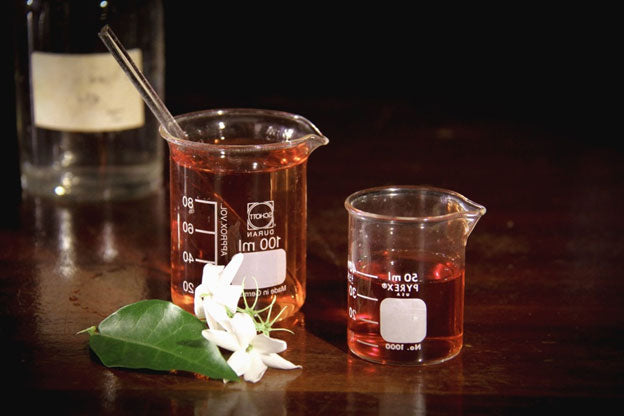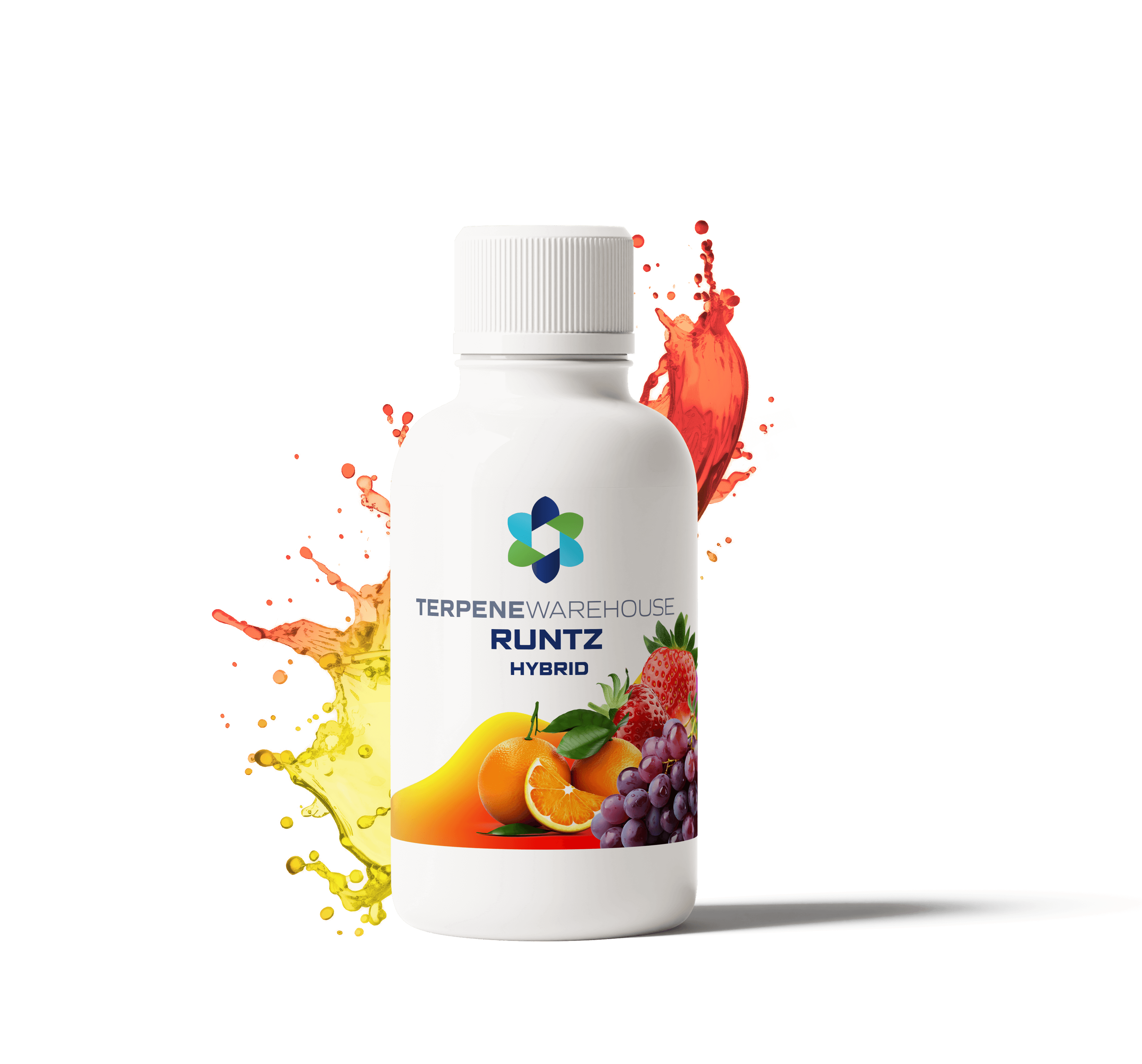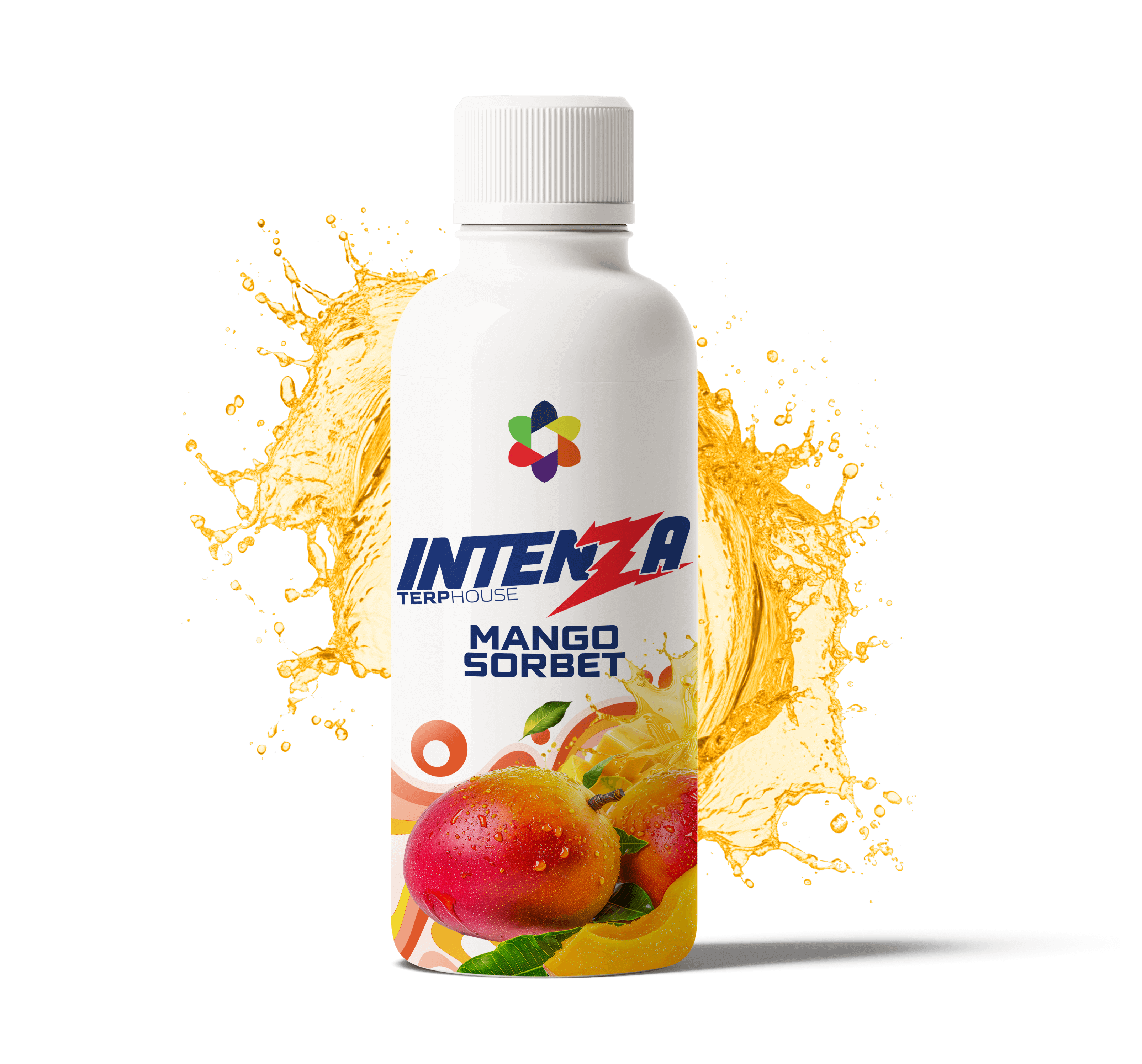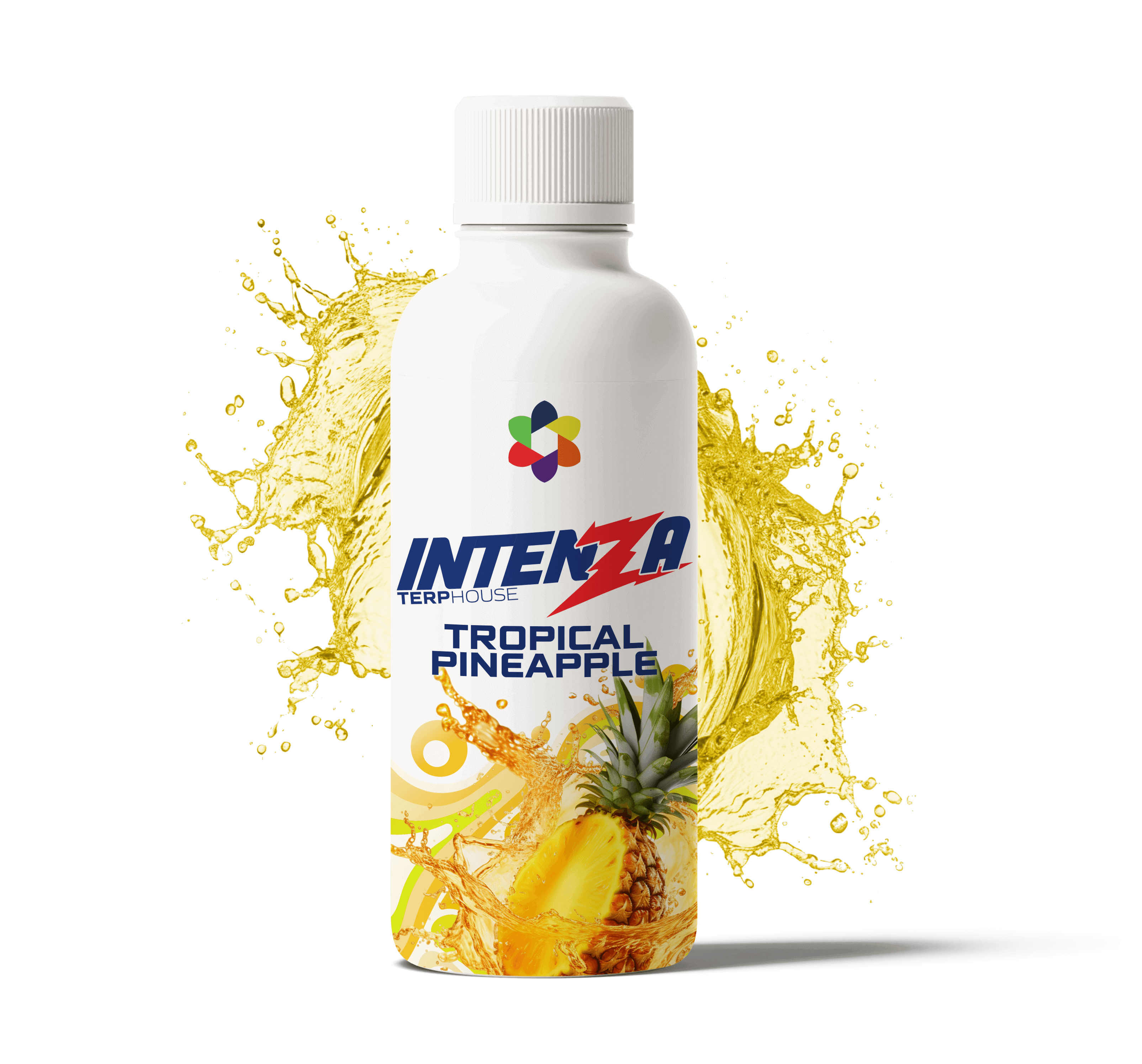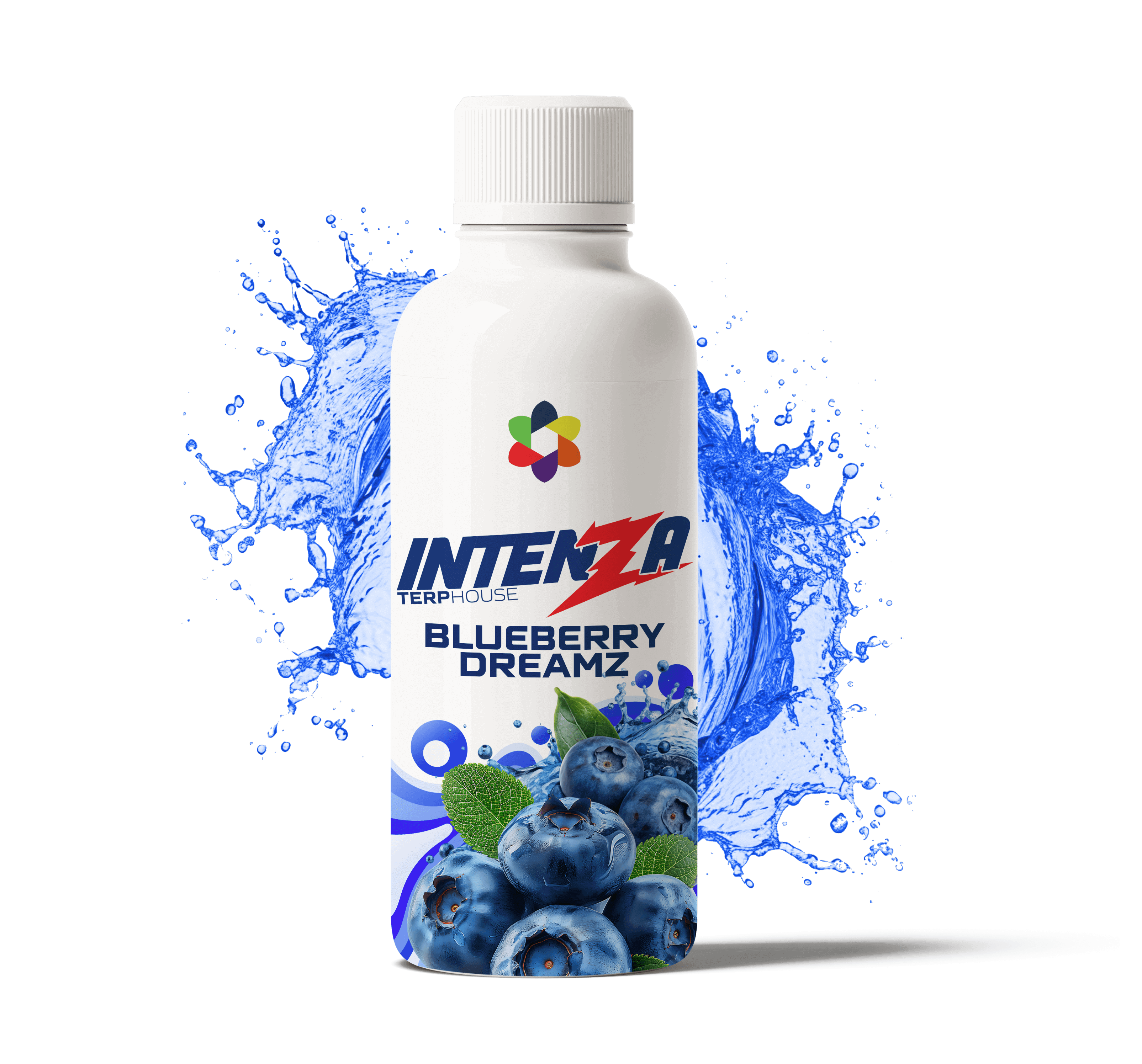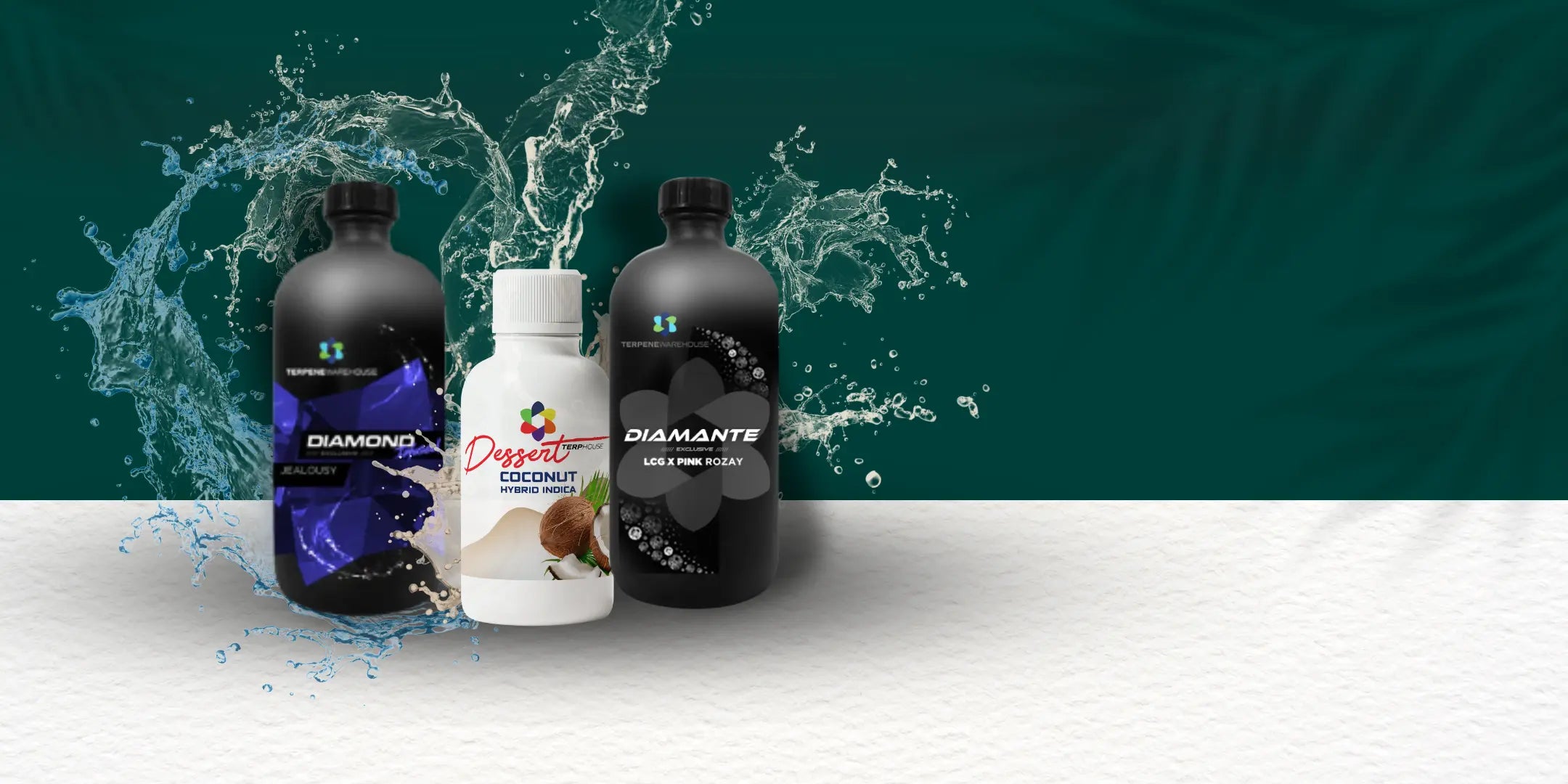Summary: What are terpenes, and how do you use them in cannabis products? Learn the purpose of terpenes and find out how to add them to your product formulations.
Terpenes are far more than merely flavorful and aromatic. These beneficial molecules each have unique properties, and cannabis products that contain terpenes take on otherwise unreachable levels of quality and effectiveness.
As a terpene novice, determining the best ways to use these profoundly beneficial compounds can be challenging. Let’s explore what terpenes are, why they’re useful, and how to include terpenes in cannabis and hemp products.
What are terpenes?
Terpenes are aromatic compounds that are found in a wide variety of different plants. While commonly associated with Cannabis sativa, terpenes are also found in fruits, herbs, trees, and dozens of other plant varieties.
In cannabis, terpenes are responsible for the unique flavors and aromas of individual strains. Hard science hasn’t yet caught up, but experts are convinced that terpenes are also responsible for the distinct effects provided by sativa, indica, and hybrid strains.
What is the purpose of terpenes?
Terpenes aren’t intoxicating, but they have unique properties. Beta-caryophyllene, for instance, interacts with your body’s CB2 receptors, which are critical components of the endocannabinoid system that modulate inflammation.
Other terpenes, such as linalool and terpineol, have been studied for their potential antibacterial properties. At present, more than 200 different terpenes have been discovered in Cannabis sativa, and no two terpenes are exactly alike.
What are terpenes used for?
In cannabis and hemp products, terpenes are used for three distinct purposes:
- Altering the taste of a finished product
- Making a finished product smell different
- Augmenting the effects of a finished product
Cannabis sativa flower naturally contains high concentrations of terpenes. Most cannabinoid extraction methods, however, oxidize terpenes, reducing their potency. Some types of hemp and cannabis extracts don’t contain any terpenes whatsoever.
Why should I add terpenes?
Even forms of cannabis extract that already contain terpenes can benefit from higher terpene concentrations. Scientists are increasingly convinced that terpenes play a critical role in the entourage effect, a theorized form of synergy that may occur when multiple Cannabis sativa compounds are used simultaneously.
While this hypothesis is yet unproven, it’s possible that the added benefits provided by the entourage effect may become stronger relative to the concentrations of terpenes that are present in hemp and cannabis products. What’s relatively certain is that hemp and cannabis products that don’t contain any terpenes at all are considerably less effective.
Terpenes aren’t just about added effects
Even if you don’t add terpenes to your products to improve their effectiveness, you shouldn’t overlook the unique aromatic and culinary properties these natural plant compounds possess. In an industry overrun by non-cannabis or artificial flavors, consumers prefer products that are flavored with natural terpenes.
Terpenes also add the naturally alluring aromas of cannabis to processed products. Especially apparent in hemp and cannabis topicals, the aromatic properties of terpenes also contribute to the pleasure of using vape products and tinctures.

How do I add terpenes to cannabis products?
In essence, adding terpenes to cannabis and hemp products simply involves mixing small amounts of concentrated terpenes into product formulations until you’re satisfied with the results. In practice, however, this process requires a little bit more finesse.
Equipment for using terpenes
First, you’ll need to assemble a few pieces of equipment:
- Concentrated terpenes: Pick up some strain-specific terpenes if you want to replicate the taste, aroma, and effects of a famous cannabis cultivar, or choose a flavored terpene option if you don’t have a particular strain in mind.
- Large-tipped glass syringe: In our experience, glass syringes with large tips work best for handling terpenes.
- Pipettes: Keeping a few pipettes on hand will help you handle terpenes, carriers, and other important components of your terpene-infused product recipe.
- Digital scale: It’s necessary to take precise weight measurements when handling terpenes.
- Lab glass for mixing: Lab flasks, beakers, take your pick. The idea is to find glass mixing containers that will make it easy to combine your ingredients.
- Magnetic stirrer or hot plate: You’ll want to keep your lab glass warm as you mix terpenes. Magnetic stirrers offer the added benefit of stirring the contents of your beakers or flasks while they simultaneously apply heat.
- Rotor-stator homogenizer: This fancy-sounding device is essentially a high-end immersion blender that will make sure your added terpenes are evenly dispersed throughout your product formulation.
- Basic mixing tool: You’ll also need to use a basic laboratory mixing tool as you add ingredients.
- Product formulation: Whether you’re making vape cartridges, topicals, or anything else, the last ingredient in your recipe will be the product formulation in need of terpenes.
Knowhow you’ll need to mix terpenes
Adding terpenes to cannabis and hemp products only goes right if you take careful measurements. Without doing some basic math, you might accidentally make your products too terpene-rich or fail to use enough terpenes.
You may, for instance, need to convert grams (g) into milligrams (mg) or kilograms (kg) into grams:
- 1000 mg = 1 g
- 1 g = 1/1000th kg
Additionally, it may be necessary to juggle microliters, milliliters, or liters:
- 1 ml = 1000 ul
- 1 ml = 1/1000 L
You might also need to determine the percentage your added terpenes will take up in your product formulation:
- 01 g of terpenes in 0.99 g of a carrier oil = 1%
Throughout the process of adding terpenes to hemp and cannabis product formulations, remember one simple rule:
- “Start low, and go slow!”
If you’re still figuring out the ideal concentration of terpenes to include in your products, start low. As you add terpenes to your product formulations, go slow to avoid mistakes.
How do I use terpenes in vapes?
Adding terpenes to vape products is one of the best ways to improve your customer’s vaping experience. For vape products, strain-specific terpene profiles are the most popular, but you can also opt for a more basic flavor profile.
How do I use terpenes in tinctures?
In tinctures, adding terpenes is all about enhancing flavor. Fruity terpene profiles are the most popular for tinctures, but you can theoretically improve the taste of a sublingual tincture with any terpenes.
How do I use terpenes in topicals?
Users of cannabis and hemp topicals want their lotions, balms, and salves to smell attractive without being overpowering. As a result, small concentrations of floral terpenes are ideal when crafting alluring topical products.
How do I use terpenes in edibles?
Hemp and cannabis edible users don’t want their delicious snacks to taste like plants. Fruity or candy-inspired terpenes work best in edibles, and feel free to add terpenes liberally.
Can I dilute terpenes?
It generally isn’t necessary to dilute terpenes before adding them to product formulations. By combining terpenes with other substances, however, you’re diluting these aromatic and flavorful compounds.
In most cases, an isolated terpene or a terpene blend won’t need to make up any more than 2% of the total volume of your formulation. Your finished formulation should never contain more than 15% terpenes.
Buy terpenes wholesale today
It’s now possible to find high-quality wholesale terpenes for sale on the internet. Whether you’re looking for wholesale terpenes for CBD products or you’re on the hunt for wholesale terpenes to use in THC formulations, Terpene Warehouse stocks dozens of uniquely desirable strain-specific terpene profiles and proprietary blends. Shop our selection or contact us today.


